By Jordan Bimm
“Is it still there?” “Yes! It survived!” We had our doubts about whether the Critter Cam we deployed at Hog Springs would last six days. Wind and weather can compromise these motion-activated digital cameras used to automatically photograph wildlife. But our biggest fear was the most dangerous critter of all: other humans. Maybe one of the eagle-eyed hikers who make their way along this short trail would spot the camouflaged instrument and out of curiosity or opportunism tamper with or remove the camera. But we were optimistic and our hope was rewarded. Field Biologist Samantha McBeth successfully recovered the camera she deployed on our first evening at MDRS along with its valuable data about what types of local fauna made their way past its lens.
While she was slicing off the zip ties she had used to secure the camera to a long and thin wooden stake, neurobiologist Jacopo Razzauti was making a discovery of his own. Just a few feet away along the edge of a reedy and stagnant part of the marshy creek, something in the water caught his eye. Perched on the red clay trail overlooking the creek, Razzauti had been looking for mosquito larvae but spotted something else. This macroinvertebrate of interest was just hanging out 10 inches or so under the surface of the water. Pivoting his attention to this mysterious water-borne insect, he instinctively reached for his net.
Unfortunately he had left his large butterfly net back in the Crew Car. For scooping mosquito larvae from creeks and ponds his weapon of choice is a small metal mesh strainer, you probably have one in your kitchen utensil drawer. But not to worry, Martian astronauts have long been depicted as creative problem solvers and we lived up to that cultural archetype. We quickly realized we could assemble a makeshift net by combining materials each of us were carrying.
McBeth produced the wooden stake her critter cam had been strapped to, a perfect handle. I reached in my backpack and pulled out my mosquito head net, its role instantly obvious to all. While Razzauti figured out how to attach the net to the handle, Olivia Drayson, an environmental toxicologist, went in search of the finishing touch: a small yet robust dead branch. She used this to prop the mouth of the net open and all of a sudden we were back in business.
Jacopo made a few solid swipes but the underwater critter proved too fast and made quick use of the labyrinth of reeds and resulting smokescreen of mud to evade capture. Still, we felt satisfaction in our quick-thinking and creativity in the field. Angus MacGyver and Mark Watney would be proud. Ingenuity may be a helicopter on Mars, but it also describes this testament to scientific teamwork at Hog Springs.
Our next stop was another attempt to “follow the water” to sites of rich biodiversity. This year’s hot and dry conditions has made employing this foundational principle of astrobiology more challenging than in any of our previous missions. We tried to think of places where we had seen water in the past at sufficient levels to make it likely to still be there this year. One spot came to mind: a tiny canyon site near the MDRS Hab known as Cowboy Corner. We visited this site in our previous missions in 2019, 2022, and 2023 and recalled the Oasis-like pond that usually punctuates the near end of the canyon.
Pulling up to Cowboy Corner we were greeted by a lone pronghorn. A pronghorn is a deer-like mammal with forked horns capable of outrunning every animal on Earth except the cheetah. We’ve seen them before but they’re always a treat to encounter. This one didn’t seem too concerned about us, and headed off in the direction of the pond. We took this as a good indicator that we’d find water hanging on there. After a short hike we peered over into the mini canyon and saw that our pronghorn friend had not led us astray. There was water, but substantially less than in years past. And the water that was there was little more than diluted mud. Our informal characterization was “forbidden milkshake.” But muddy brown water is still water, and where we find water we also find life, so we set to work.
Razzauti unholstered his trusty mesh strainer, knelt down next to the pond, and started fishing for mosquito larvae. He quickly found success, moving them to sample containers for transport back to the MDRS Science Dome. At the same time, McBeth had produced Razzauti’s insect net (there’s no way we’d forget it twice), and dipping it in the pond also hit paydirt. “Something is moving in here!” she called. The dirty, slimy consistency of the water made it difficult to tell exactly what she had found.
Looking over her shoulder at where she had deposited the contents of the net I noticed a mud-covered blob slowly pulsating and twitching. If filmed in close up, the scene could pass as something out of a 1950s creature feature. As McBeth fearlessly used her hands to remove the mud from this wriggling and mysterious lifeform, Razzauti was able to make a positive identification. “It’s a tadpole. But a really big one.” Sure enough, it was a tadpole, but at the size of an adult’s thumb it was larger than any I’d ever seen. We marveled at its large size but returned it to the pond in favor of the mosquito larvae. These two discoveries, the mystery macroinvertebrate at Hog Springs, and the supersized tadpoles at Cowboy Corner remind us of the vast array of life in Utah’s creeks and ponds that often fly under the radar.
After a short drive back to the Hab we unloaded our samples and hunkered down as a brief but intense rainstorm passed over MDRS. Amid the pitter-patter of raindrops and the occasional thunderclap we turned to crafting our final report and planning our fieldwork tomorrow, which will be our final full day of science for this mission.


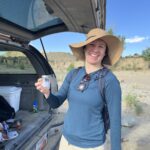
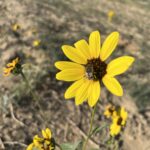
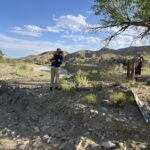
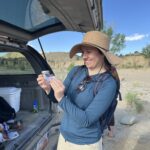
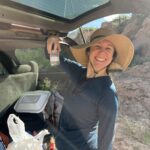
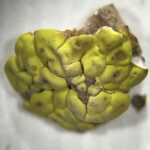

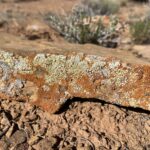
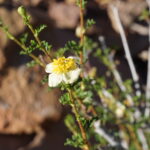
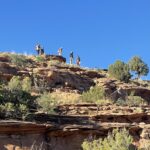
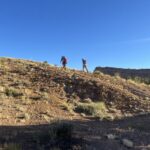
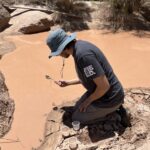
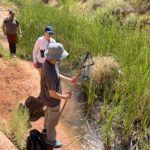
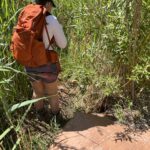
You must be logged in to post a comment.